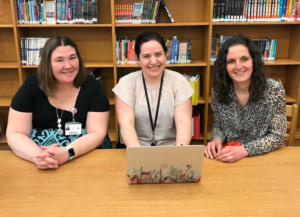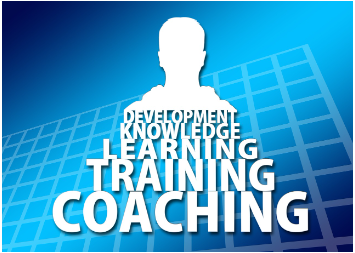We do some things in education that really don’t accelerate teacher growth and student learning. For example, we have invested billions of dollars into high-stakes teacher evaluations for over a decade and into traditional professional development annually, both of which have been largely ineffective. Given that high-stakes teacher evaluations and traditional professional development have fallen short, what can we do? One solution is to use video for professional development.
Nothing is as powerful as seeing how you’re teaching with your own eyes. As a teacher, you make thousands of decisions in a day and you can’t see everything. It’s amazing what you can see on the video that you would miss otherwise to increase your effectiveness.
Video for professional development is like an athlete’s game tape
When was the last time as an educator that you watched a video recording of yourself instructing a lesson, running a meeting or facilitating professional learning? However, if you were to ask a group of athletes to raise their hands if they or their coaches have used video recording to help teams and players self-reflect, collaborate or make improvements, you would see a different response.
It is an interesting paradox. Athletes and athletic teams regularly refer to the game film to get better. Teachers rarely do. It is possible to get through your entire career without once having seen yourself teach on video. That is rather staggering when you think about it.
“Video is the single most powerful advancement in professional learning in schools in our lifetimes,” Jim Knight writes in “Focus on Teaching: Using Video for High-Impact Instruction.”
Video is powerful for teachers at all stages of development and experience, not just new or struggling teachers. Master teachers can use video to be more analytical and reflective. A reflective process pushes average teachers to the next level, and struggling teachers benefit as well from using video to view their own practice and the instructional work of others.
Here are four ways you can leverage video to accelerate teacher growth and student learning: self-reflection, mentoring, coaching and collaboration.
Use video for self-reflection
One of the most important skills all teachers need to develop is reflective practice. It is only through a critical and detailed analysis of their performance that strengths and areas for growth are ascertained and addressed. Often in the fast-paced world of education, analysis and self-reflection are two things we cut short.
Video, better than any other tool or constructive feedback, allows us to see what it looks like when we teach and our students learn. Instead of relying on our memory or what we think happened, video for professional development allows us to take a step back and reflect more accurately by being able to pause and rewind footage. Although almost no one likes viewing or hearing themselves on video (which can make it hard to do since video recording is vulnerable work), video can show us things we would otherwise not see.
Video for professional development allows teachers to see themselves through the same lens as others see their teaching. It also allows teachers to see their students’ learning and see things that are often missed or overlooked in a classroom setting.
Benefits of video for self-reflection include:
- Unbiased and objective view of teaching and learning.
- Allows the teacher to look at their practices.
- Provides one of the quickest ways to see things that exist (or don’t exist) in teaching and students’ learning and make purposeful changes.
- Leads to teacher success based on a picture of reality about what is happening in the classroom.
I use video when working as an instructional coach. One teacher, Christina Miller, says it gives her the students’ perspective of her classroom. “It helps me to reflect on why students may be struggling or excelling, and how my role needs to adjust to guide or challenge them accordingly,” she says, noting that video also helps “understand trends that I have seen in student progress to try and identify where a breakdown may be occurring.”
Self-reflection is one of the greatest forms of professional learning. Whether you are a new teacher or an experienced one, it is a key element to improving an educator’s practice.

Tap video for mentoring
New teachers also benefit from observing experienced teachers within the same school with the same student population. Classroom snapshots (often 10 to 20 minutes of classroom footage rather than full classroom recordings) provide excellent data for timely, structured coaching and mentoring conversations, and they help novice teachers improve their noticing and self-reflection skills.
Too often, however, we make classroom visitations an event rather than a common practice, which is not an effective way of promoting job-embedded professional learning. Just like someone shouldn’t expect that an infrequent exercise session will improve their health, we shouldn’t expect significant changes to teacher practice because of sporadic mentor meetings and workshops.
To facilitate frequent connections between teachers, my school district uses the Sibme platform for video for professional development. Teachers record videos of their classrooms in a private workspace on the platform. They then can share their videos in either coaching or collaborative huddles. When they share to huddles, anyone (coach, mentor or colleague) in that huddle can view the video and leave time-stamped comments or questions, and everyone in the huddle can reply with typed comments or audio feedback. Novice teachers have the opportunity to work with other teachers, mentors and coaches daily, not weekly or monthly as many programs provide.
Video for mentoring allows:
- Viewing the mentee’s classroom more frequently.
- Viewing the mentor’s classroom more frequently.
- Talking about a lesson around a tangible video resource that both mentee and mentor have viewed.
- Discussing teaching and learning not bound by schedules or meeting times.
As Miller’s mentor, Kate Frentz, explains, “We can share lesson ideas, strategies and provide feedback and resources with each other in times and settings that we have not been able to before. This has allowed the feedback to be meaningful and impactful because it allows us to actually see what is happening in the classroom. This has made the relationship between my mentee and myself as a mentor more meaningful because I am learning from her and she is learning from me.”
Capitalize on video for coaching and collaboration
Video is also helpful for instructional coaching and collaboration with other teachers. Finding time to collaborate with other teachers is one of the biggest challenges that many educators face today. There are so many teachers with expertise in our own buildings, but we just don’t have the time or schedules to actually meet together in person. And the occasional once-per-marking-quarter or twice-a-year professional development days are an event and not continuous professional learning.
Video coaching and collaboration allows:
- Video recording and resources uploading.
- Collaboration around specific topics with classroom video footage.
- Discussion of instructional decisions made by teachers.
- Opportunity to give and receive feedback from coaches and colleagues.
- Ability to learn, share, reflect and grow across vertical grade levels.
Video for professional development can fit anywhere into teachers’ busy schedules.
“My instructional coach, Donna, was able to see into my classroom without even stepping foot into my classroom. She was able to comment on my instruction as well as upload additional resources for me to consider using in my classroom,” Sarah O’Brien, a veteran teacher and English language arts department chair says.
As the ELA department coordinator, O’Brien used video to help the elementary- and middle-school ELA teachers work on vertical articulation from grades four through eight. She also has been able to record videos and upload resources for teachers in her building.
“Because of the video, there is a lot of professional learning happening even though there is no time to meet in person,” O’Brien says.
Video can be a key practice for improving teaching and learning. There is power in peer collaboration and coaching between and among teachers. Research suggests that teachers can and do learn from each other and that when schools promote collaboration, teacher practice and student outcomes improve. If you aren’t incorporating video for professional development yet, is it something you might consider?
Donna Spangler is the K–12 instructional coach department chair for Derry Township School District in Hershey, Pa. She served as past co-president of the board for the Learning Forward PA, ran a school induction and mentoring program for six years and has co-authored a book. She also provides virtual coaching for Sibme.
Opinions expressed by SmartBrief contributors are their own.
_________________________
Subscribe to SmartBrief’s FREE email newsletter to see the latest hot topics on EdTech. It’s among SmartBrief’s more than 250 industry-focused newsletters.
